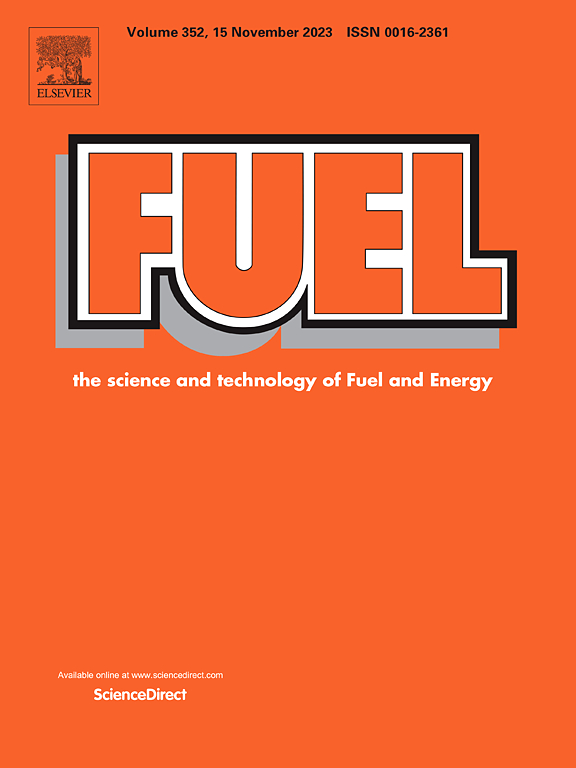Efficient in-situ transfer hydrogenation of palmitic acid into alkanes over Ni/CexZr1-xO2 solid solution catalysts in aqueous medium with methanol as the hydrogen donor
IF 6.7
1区 工程技术
Q2 ENERGY & FUELS
引用次数: 0
Abstract
Compared to adding high-purity H2, converting microalgae-oil into high-quality fuel through in-situ transfer hydrogenation is more economical and safer. Multiple Ni/CexZr1-xO2 catalysts were prepared using the co-precipitation method and evaluated for in-situ transfer hydrogenation for palmitic acid (PA) with methanol as the hydrogen donor. The results indicated that, compared to Ni/ZrO2 and Ni/CeO2, the catalytic activity of all Ni/CexZr1-xO2 has been significantly improved by the formation of solid solutions. Wherein, Ni/Ce0.8Zr0.2O2 possessed the best catalytic effect, surpassing commercial Pt/C. And under optimized conditions (330 °C, 4 h, and 9.6 mmol methanol), Ni/Ce0.8Zr0.2O2 (15 wt% Ni-loading) achieved the highest palmitic acid conversion of 93.6 % and alkane yield of 90.4 %. The excellent performance of Ni/Ce0.8Zr0.2O2 was attributed to the combined effect of larger BET surface area, smaller particle size, stronger H-adsorption capacity and spillover hydrogen effect, more surface defects and oxygen vacancy concentrations. The stability testing showed that after four cycles, the main products over Ni/Ce0.8Zr0.2O2 changed from alkanes to methyl palmitate. And the catalyst deactivation was caused by multiple factors such as the decomposition of Ce0.8Zr0.2O2, aggregation and leaching of Ni, and carbon deposition.

求助全文
约1分钟内获得全文
求助全文
来源期刊

Fuel
工程技术-工程:化工
CiteScore
12.80
自引率
20.30%
发文量
3506
审稿时长
64 days
期刊介绍:
The exploration of energy sources remains a critical matter of study. For the past nine decades, fuel has consistently held the forefront in primary research efforts within the field of energy science. This area of investigation encompasses a wide range of subjects, with a particular emphasis on emerging concerns like environmental factors and pollution.
 求助内容:
求助内容: 应助结果提醒方式:
应助结果提醒方式:


